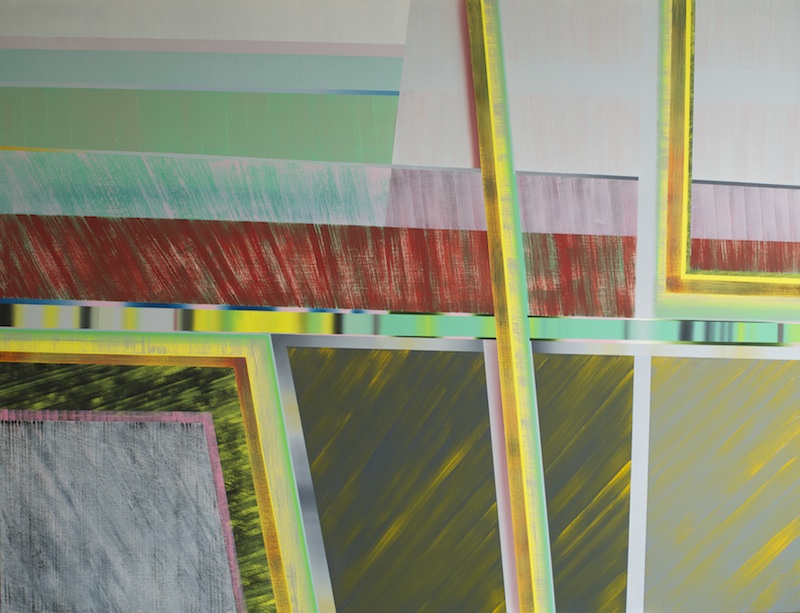By the end of 2008 more than half of the world’s population lives in cities.
The urban environment can therefore now be seen as the natural habitat of modern man. Despite that, the city is not normally perceived as a ‘natural’ environment. ´Land´ in the phrase ´landscape´ is usually taken to mean ´countryside´.
In my series “Lost Horizon” the city is the main source of inspiration.
I can best explain the story I want to tell with my paintings on the basis of one example: the painting “Lost Horizon V”.
For me this is a representation of what it is like to be in a city. The light is often indirect due to reflection, combined with sunlight and / or artificial lighting. Lines of sight are constantly interrupted, there is a new perspective around every corner. Bright colours in the city are always framed; by a wall, a roof, a piece of air.
In a pastoral landscape, bright colours can also be present, but rarely or never in a framework.
Often the city is portrayed as “unnatural”, but that only applies to the construction, which is indeed made by human hands. However, the city dweller, just like man living in the wilderness, has his natural habitat. The city only needs different adaptations. You usually do not see the horizon in the city, but to orient yourself there is an abundance of unique, fixed landmarks. In the wilderness there are landmarks as well, but fewer and more changeable.
In my work there are also no landmarks in a certain sense; there is nothing figurative present, but there is still a lot to recognize. Elements of a map, of which the scale is not clear. Above left some strips that have landscape elements in them, and in contrast to a map suggest that there is a horizontal view, for example from a window or between two buildings. As far as the perspective is concerned, the viewpoint jumps back and forth. Almost all lines run off the plane. What is shown in the painting is clearly part of a larger whole. There is no clear foreground, each plane is intersected and collides with adjacent planes. The lines seem to give a view on another layer, it is very difficult to focus your eyes; there is no natural resting point. The intersections of the converging lines on the painting all meet outside the image plane, and are clearly part of a larger whole. The painting is a representation of the perception in the city (not directly of the city itself), all visual elements are chosen to evoke the effect of that perception.
